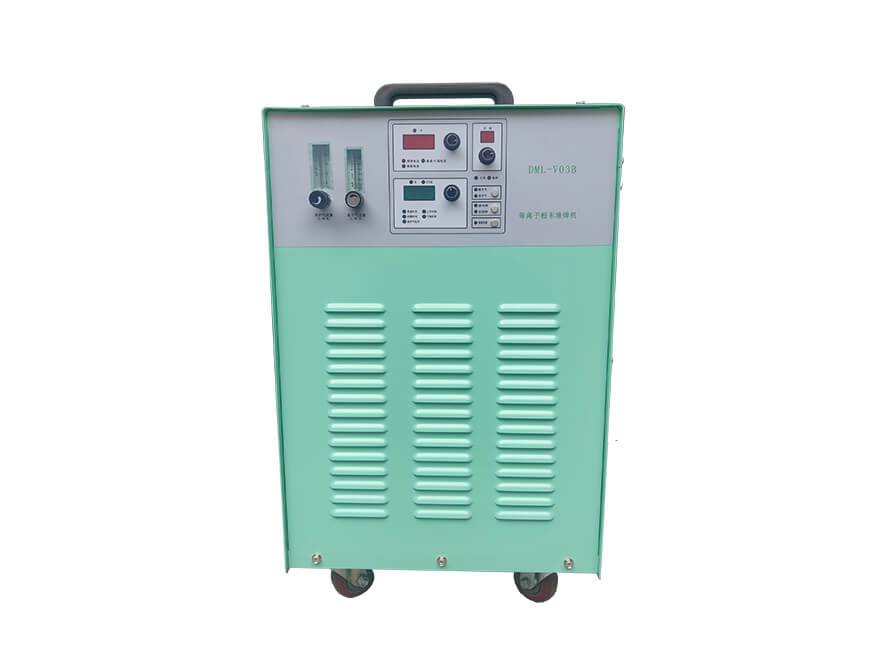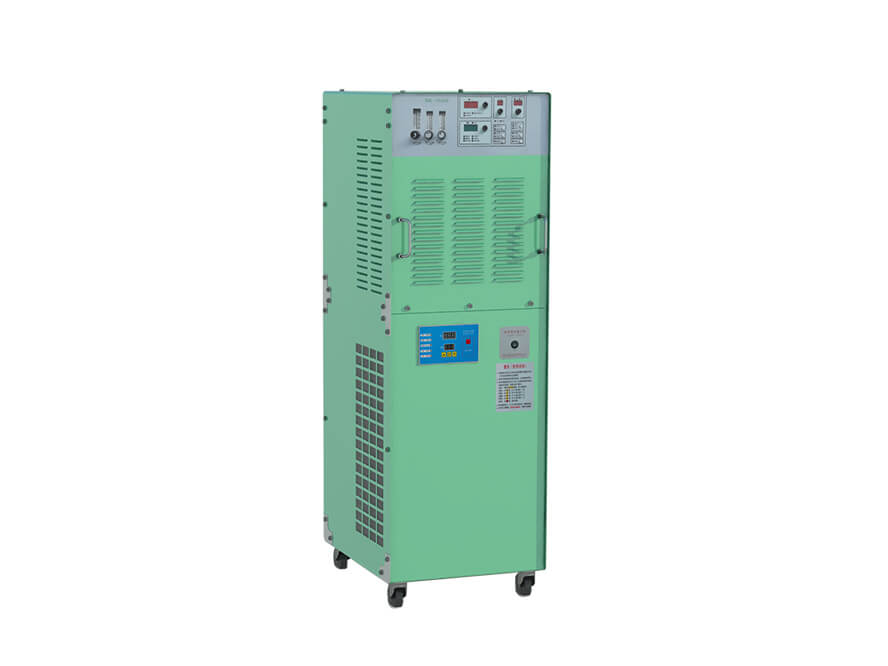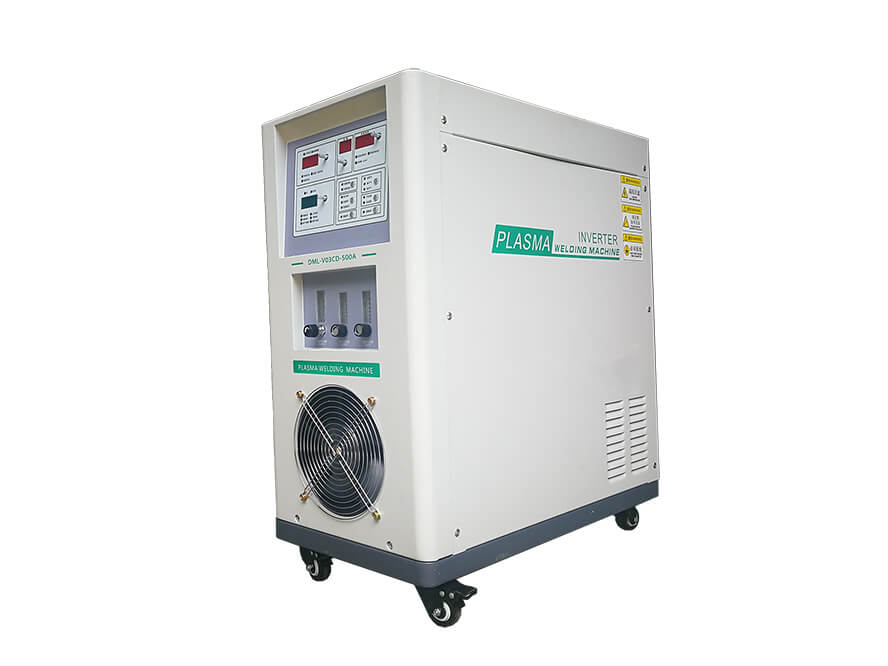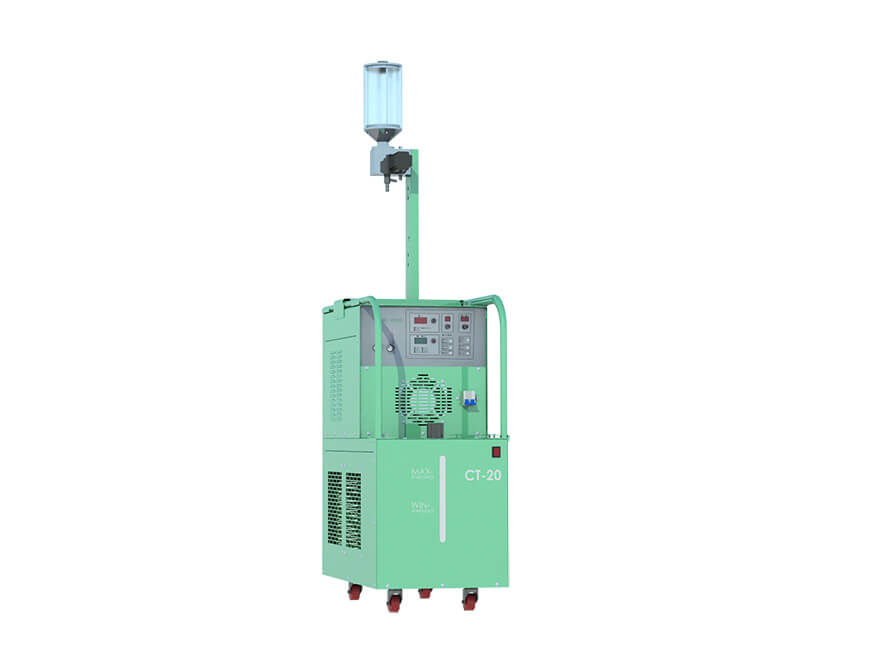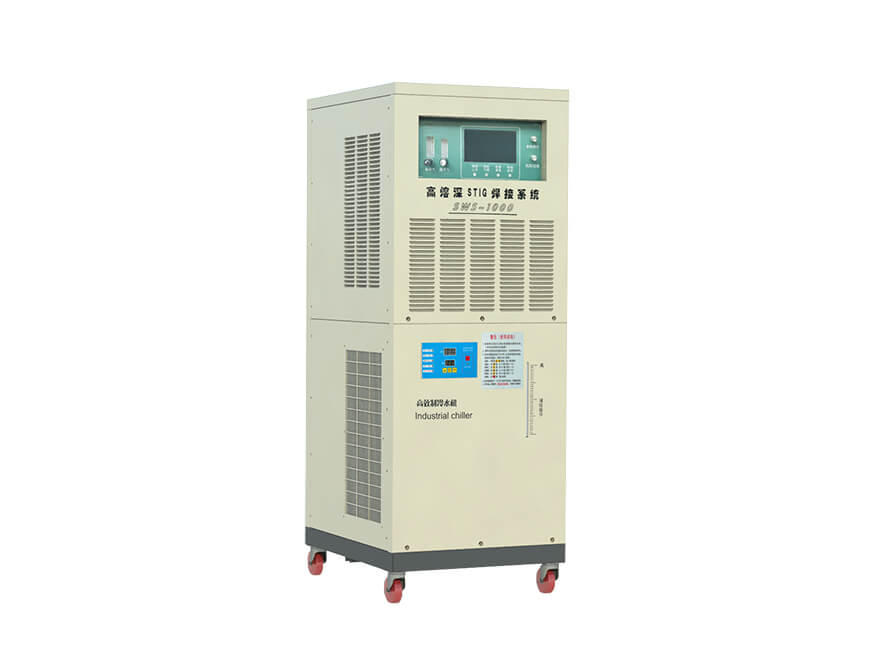Plasma Hardfacing Machine Power Source
At the heart of the Plasma Hardfacing Machine is the power source. It serves as the primary energy source for generating the plasma arc.
Plasma cladding is an innovative welding technique that taps into the power of the plasma arc as its primary heat source. By leveraging the intense heat generated by the plasma arc, alloy powders are swiftly melted and merged with the substrate’s surface. The result? A durable, high-performance alloy layer that both strengthens and hardens the surface of the component. What’s more, the Plasma Hardfacing Machine offers adjustable parameters, granting precise control over the cladding layer’s thickness, width, and hardness. This enhanced process not only significantly bolsters the workpiece’s resistance to corrosion, wear, and heat but also dramatically extends equipment life. Beyond longevity, the method is invaluable for the repair and recycling of equipment parts, providing cost-effective solutions in terms of both usage and maintenance.
Plasma Hardfacing Machine Power Source Host Parameters.
The Plasma Hardfacing Machine Power Source can integrate the plasma arc power source, main power unit, cooling tank, and powder feed controller, offering intelligent linked control for convenient and flexible operation.
Technical Features of the Plasma Hardfacing Machine Power Source:
- Employs high-speed DSP digital processing technology, offering dynamic power control and excellent quality. The welding process utilizes waveform control, ensuring stability, swift operations, and precise control.
- Incorporates IGBT soft-switching technology, resulting in reduced stress on power components, longer service life, and efficient, energy-saving power supply.
- High control accuracy with a stable arc. Features chopping technology with an adjustable current range of 2-300A, providing broad adjustability.
- High-voltage design ensures smooth arc initiation as well as control over arc hardness and length.
- Both the arc current and base current are adjustable. A reduced arc current lowers losses, decreases torch load, and conserves energy. Adjustable parameters include arc current range (2-20A), current rise and fall times, and gas supply delay.
- An integrated design for the main arc power source and maintenance arc power source simplifies the structure and reduces the likelihood of faults.
- Can be equipped with high-power cooling to ensure stable operation even in high-temperature conditions.
- The powder feeder is synchronized with the main unit, allowing adjustments in feeding time and quantity to minimize powder wastage and ensure welding quality.
- Multi-system feedback synchronization ensures the welding machine and torch can only operate under normal conditions, eliminating risks like torch burning due to a lack of coolant.
- Features a digital communication port, enabling remote welding control (optional). Data storage is convenient, retrieval is flexible, and operation is user-friendly. Plus, the system requires minimal technical expertise from the welder.
- Offers a variety of torches to choose from, providing flexibility and high production efficiency. Equipped with a handheld torch, allowing on-site hardfacing, repairs, and more.
- Can be paired with various hardware to achieve multifunctional tasks, such as Plasma powder surfacing, Plasma arc welding, Precision pulse welding (imitating laser welding), and Precision argon welding, among others.
Advantages of Plasma Hardfacing:
- Plasma hardfacing can be directly applied to metal part surfaces with corrosion and oil contamination without the need for complicated pretreatment processes.
- The arc possesses high energy density and strong penetration. The slender arc column offers excellent control. Up to a certain thickness, the workpiece being welded doesn’t require a bevel. Furthermore, single-sided welding with double-sided formation can be achieved. The arc shape is close to cylindrical, making the weld quality insensitive to arc length variations. It has a small divergence angle (about 5 degrees), resulting in a straight weld seam. Changes in the arc length have minimal impact on the heated spot area, making it easy to achieve a uniform weld condition. The resulting weld seam is aesthetically pleasing with minimal deformation.
- The high temperature of the weld pool and the stirring action of the arc facilitate the release of gases within the pool. This leads to a dense overlay structure with an attractive appearance and low dilution rate. The alloy layer and base material surface are metallurgically bonded, ensuring high integrity.
- The tungsten electrode is retracted within a water-cooled nozzle and doesn’t come into direct contact with the workpiece. This effectively prevents the introduction of tungsten impurities in the weld alloy, and also extends the electrode’s lifespan.
- The plasma hardfacing process is easily adaptable for mechanized and automated repetitive production, offering a welding efficiency that is 3-5 times that of conventional argon arc welding. The welding quality is high and consistent. The equipment has a simple design, low energy consumption, is easy to maintain, and straightforward to operate. Typically, operators can independently handle the equipment after just two days of training.
- The welding application is versatile, suitable for a wide range of materials including carbon alloy steel, stainless steel, titanium alloys, nickel-based alloys, cobalt alloys, and zirconium, while ensuring exceptional welding speed and quality.
Applications of Plasma Hardfacing:
- Steel and Coal Industry: Cold (and hot) rolling rolls, grooves, wear-resistant plates, sprocket teeth, and more.
- Power and Cement Industry: Turbine blades, grinding rolls, etc.
- Oil and Chemical Industry: Hardfacing of drill rods, drill bits, valves, and more.
- Construction Machinery and Mining Industry: Tunneling machine cutter heads, roller chains, excavator bucket teeth, crawler plates, and the like.
- Agricultural Machinery: Rotary tiller blades, among others.
- The technology also finds applications in sectors such as the food and pharmaceutical industries, water treatment, power plants (including the nuclear power industry), aerospace, shipbuilding, pressure vessels, arms industry, and many more.
Deewi Automation Technology Co.,Ltd.
We are glad to offer technical solutions to people who are interested in our products. You just need to fill a form.
Get in touch with us today!


